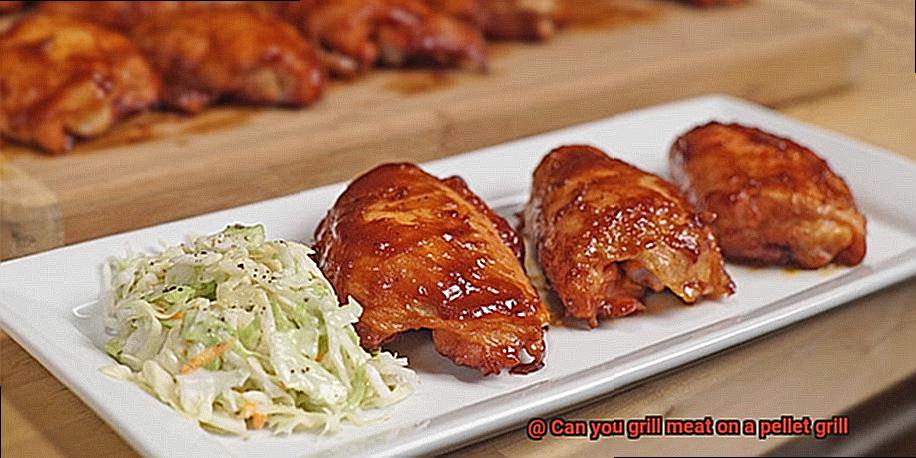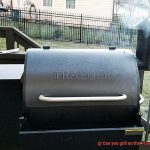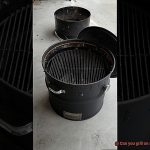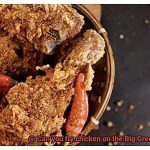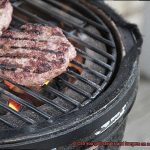Grilling is probably one of your all-time favorite pastimes. The sizzle and mouthwatering aroma of perfectly cooked meat on a scorching grill are simply unbeatable.
Yet, when it comes to grilling, most people tend to think of the traditional charcoal or gas options. But have you ever wondered if you can achieve that same deliciousness on a pellet grill?
Well, today is your lucky day because we’re about to dive into this intriguing topic. Pellet grills have been gaining popularity in recent years for their versatility and convenience.
Join me as we embark on a journey to uncover whether or not you can grill meat on a pellet grill, and discover some secrets to achieving mind-blowing results along the way.
Contents
Versatility of Pellet Grills
The versatility of pellet grills knows no bounds. They are a culinary powerhouse that can be used for grilling, smoking, roasting, baking, and even braising. Let’s dive into their grilling capabilities and explore how they can elevate your meat-cooking game.
One of the key advantages of pellet grills is their ability to maintain a consistent temperature throughout the cooking process. This makes them perfect for grilling meat to perfection. With the ability to sear meat at high temperatures and then lower the temperature for slow cooking, pellet grills offer endless possibilities. Imagine the sizzle of a perfectly grilled steak or the juiciness of a tender chicken breast – all achieved with precision on a pellet grill.
Speaking of meats, pellet grills can handle it all. From succulent steaks to juicy burgers, from mouthwatering pork chops to flavorful sausages, and even delicate seafood like fish and shrimp – all can be expertly grilled on a pellet grill. The direct flame feature allows for searing and charring, creating a delectable crust that locks in those precious juices. Plus, with the consistent temperature control, achieving various levels of doneness is a breeze.
But wait, there’s more. Pellet grills also excel at indirect grilling, which is ideal for larger cuts of meat such as whole chickens or roasts. By placing the meat away from the direct heat source and utilizing the grill’s convection heat, you ensure a juicy and evenly cooked result. As an added bonus, infusing your meat with flavors becomes effortless with different wood pellets like hickory, mesquite, or applewood.
To further enhance their versatility, pellet grills often come with an array of accessories. Grill grates with different designs – sear marks or flat surfaces – allow for perfect grill marks every time. Smoke boxes add additional layers of flavors to your meat creations. Rotisserie kits ensure even cooking of those grandiose pieces of meat. And who can resist the temptation of baking homemade pizzas on a pellet grill with the help of a pizza stone?
But versatility doesn’t end with functionality alone. Pellet grills are also incredibly user-friendly. Equipped with digital controls, you can effortlessly set and monitor the desired temperature throughout the cooking process. Some models even boast Wi-Fi capabilities, allowing you to control the grill remotely via your smartphone. Now you can socialize with friends and family while keeping a watchful eye on your masterpiece.
Fuel efficiency is another feather in the pellet grill’s cap. Pellets, made from compressed sawdust and wood byproducts, offer an eco-friendly fuel option. With a hopper that automatically feeds pellets into the firepot, you have a steady heat source without the need for constant monitoring or refueling.
Precise Temperature Control
Unlike other types of grills, pellet grills use advanced technology to maintain a consistent and accurate temperature throughout the cooking process. So, how do these amazing grills achieve and maintain such precise temperature control? Let’s dive in and find out.
The temperature control system in a pellet grill consists of three main components: a digital controller, a temperature probe, and a fan. The digital controller is your trusty companion that allows you to set the desired temperature with ease. Whether you want to cook your steak at 325°F or smoke your ribs at 225°F, simply punch in the numbers and let the magic happen.
But how does the grill know if it’s reached the desired temperature? That’s where the temperature probe comes into play. This nifty little device constantly measures the internal temperature of the grill and sends this information back to the digital controller. By having real-time data on hand, the controller can make quick adjustments to ensure that your grill stays right on track.
Now, here’s where things get really interesting. Based on the information received from the temperature probe, the digital controller adjusts the amount of wood pellets fed into the fire pot and regulates the speed of the fan. Yes, you heard it right – wood pellets are the fuel that powers these grills. By controlling the amount of fuel and oxygen supplied to the fire, the pellet grill can achieve and maintain the desired temperature with great precision.
Imagine you’re cooking a mouthwatering steak. The temperature probe senses that the grill has dropped below your set temperature, so the digital controller kicks into action. It increases the flow of wood pellets into the fire pot, which in turn raises the temperature. And if things start to get too hot, don’t worry – the controller will reduce the flow of pellets and slow down the fan to bring the temperature back down. It’s like having your own personal temperature assistant by your side.
But why is precise temperature control so important? Well, when it comes to grilling meat, achieving an even cook is the holy grail. With a pellet grill, you can easily set the temperature to achieve perfect results for different cuts of meat. Whether you want a rare steak or a well-done brisket, these grills have got your back.
And if you’re a fan of that delicious smoky flavor, you’re in for a treat. The precise temperature control of a pellet grill allows for long, slow cooking at low temperatures – perfect for smoking meats to perfection. Just imagine sinking your teeth into tender, smoky ribs that fall right off the bone. It’s enough to make any grill master swoon.
Wood Pellets as Fuel Source

Look no further than wood pellets as the fuel source for your pellet grill.
Wood pellets: grilling’s best-kept secret. They offer not just convenience, but efficiency too, making them the go-to choice for any serious grilling enthusiast. Crafted from compressed sawdust and other wood waste materials, these pellets are an eco-friendly option that will leave you feeling good about your grilling choices.
But it’s not just about being eco-friendly. Wood pellets come in a cornucopia of flavors, from the robust hickory to the fiery mesquite, the sweet apple to the luscious cherry, and everything in between. Let your taste buds embark on a flavor expedition and discover the perfect match for your favorite cuts of meat.
Harnessing the power of wood pellets is as simple as pie. Load them into the hopper, nestled gently on the side of your grill, and let the magic unfold. An ingenious auger system feeds the pellets into the fire pot, where they ignite to create a controlled blaze that produces both heat and smoke for cooking.
And here’s where things get really exciting – pellet grills are temperature control wizards. With a digital controller, temperature probe, and fan at your disposal, you can effortlessly fine-tune the temperature to your desired level. No more guesswork or constant vigilance required – just set it and forget it.
And let’s not overlook their clean-burning prowess. Wood pellets burn with remarkable efficiency, leaving behind only a whisper of ash. Say goodbye to messy clean-ups and hello to more time savoring mouthwatering grilled delights.
High-Heat Grilling with Pellet Grills
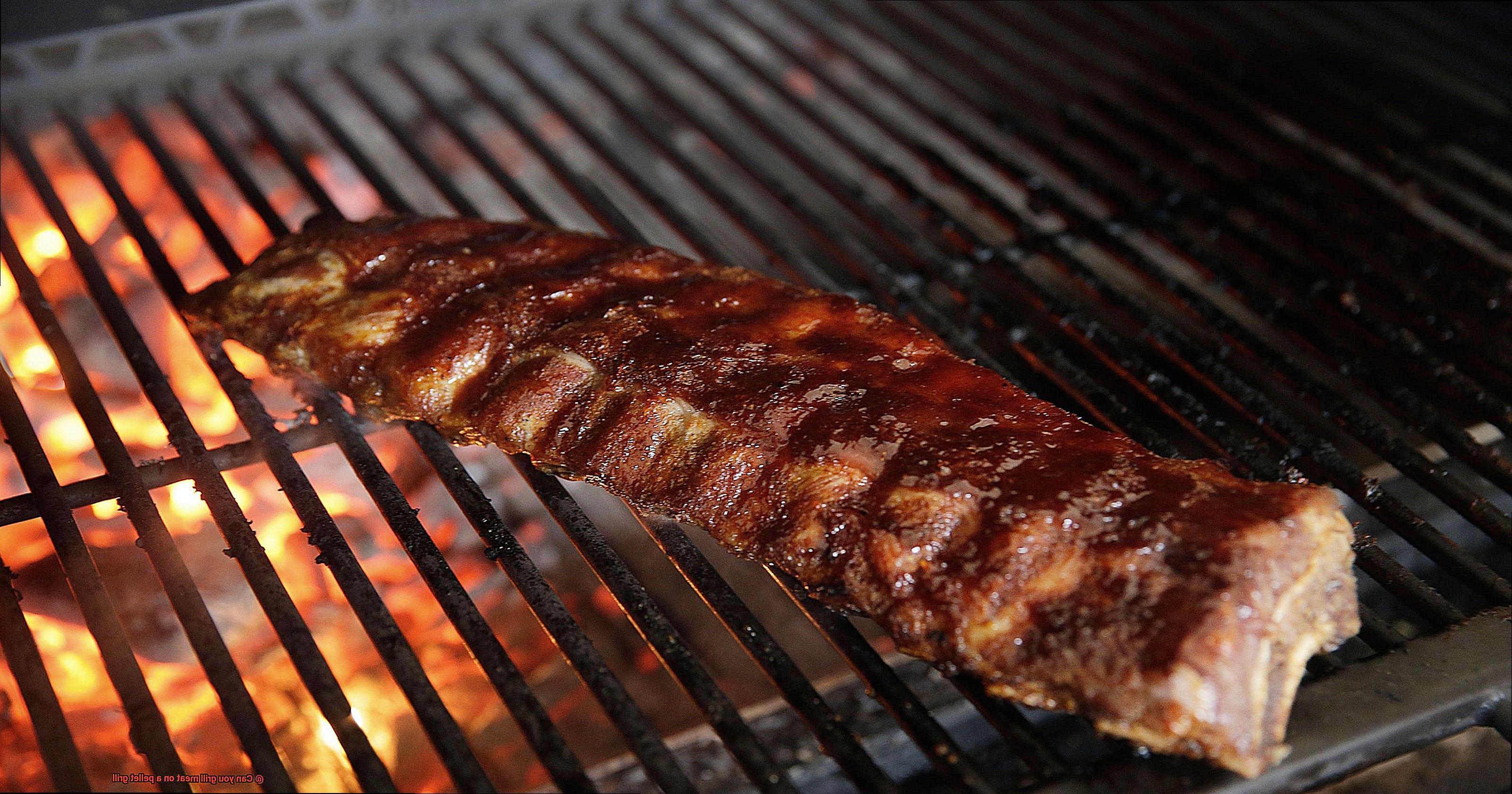
Look no further than the mighty pellet grill. These versatile cooking machines are the secret weapon of every backyard pitmaster, offering precise temperature control and the ability to achieve high-heat grilling like a pro. In this comprehensive guide, we will take you through the art of high-heat grilling with pellet grills, covering everything from preheating to choosing the right pellets, monitoring internal temperatures, and more. Get ready to ignite your taste buds and become the grill master you were meant to be.
Preheating: The Sizzle Starts Here
The first step to successful high-heat grilling is preheating your pellet grill. This crucial step ensures that your grill is ready to sear that mouthwatering steak or perfectly char those juicy burgers. Set the temperature to a sizzling 400°F or above and let it heat up for at least 15 minutes. Feel the anticipation building as your grill reaches its optimal cooking temperature.
Choosing the Right Pellets: Fueling the Flavor
Not all pellets are created equal when it comes to high-heat grilling. To fuel the fire and enhance those grilled flavors, opt for hardwood pellets like oak, hickory, or mesquite. These pellets burn hotter and impart a delicious smoky flavor to your food. As you add these pellets to your grill, imagine the rich aroma that will soon envelop your outdoor cooking space.
Monitor That Meat: The Perfect Cook Every Time
Achieving the perfect internal temperature is key to a successful high-heat grilling session. Invest in a reliable digital meat thermometer to ensure your meat reaches its desired doneness without overcooking. From medium-rare steaks to perfectly cooked chicken breasts, keep a close eye on that thermometer as it reaches the ideal temperature. Remember, precision is the key to culinary perfection.
Seal in the Juices: Keep That Lid Closed
To achieve that coveted sear on your meat, resist the temptation to constantly check on it. Keep the lid closed as much as possible to allow the grill to trap the heat inside. This ensures faster and more even cooking. Trust the process, trusting that sizzle and pop of meat meeting heat, and you’ll be rewarded with a deliciously crispy exterior and a tender, juicy interior.
Resting: The Final Touch
Once your meat is grilled to perfection, resist the urge to dive right into it. Let it rest for a few minutes, allowing the juices to redistribute throughout the meat. This simple step ensures a mouthwatering, flavorful dish that will have your guests begging for seconds. As you wait patiently for that moment of indulgence, visualize the succulent tenderness that awaits your first bite.
Direct Flame Feature for Searing and Charring Meat
The direct flame feature on a pellet grill is a game-changer when it comes to searing and charring meat. This incredible tool harnesses intense heat to create a mouthwatering crust that locks in all the flavors and juices, taking your grilling game to the next level. Let’s dive into the process of using this feature and some tips and techniques for achieving optimal results.
To begin, preheat your grill to ensure the direct flame feature reaches its maximum temperature. Set the grill to the highest setting and give it at least 10-15 minutes to heat up. This ensures that you have the intense heat needed for searing and charring.
Once your grill is preheated, activate the direct flame feature by locating the flame broiler or sear station. This is where the magic happens. Open up the cover or remove any covers on the flame broiler to expose the flames.
Now it’s time to place your meat on the grill and let it sizzle. Be sure not to overcrowd the grill, as this can hinder even cooking and charring. Leave enough space between each piece of meat to allow for proper heat circulation.
As your meat cooks, keep a close eye on it. The intense heat from the direct flame feature can cause flare-ups, so be prepared with a spray bottle filled with water to control any potential flames. Depending on the thickness of your meat, you’ll want to flip it every 1-2 minutes to ensure even charring on both sides.
Once your meat is beautifully seared and charred, remove it from the grill and let it rest for a few minutes. This allows the juices to redistribute within the meat, resulting in a tender and juicy final product.
Now let’s discuss some key tips for mastering the art of grilling with the direct flame feature.
Firstly, thinner cuts of meat work best with this method. Thicker cuts may require more time on the grill, which can lead to overcooking or uneven sear marks. Opt for thinner cuts like steaks, pork chops, or chicken breasts for the best results.
Secondly, don’t be afraid to experiment with different seasonings. The direct flame feature enhances the flavors of your meat, so get creative. Try a spicy rub, a tangy marinade, or a simple salt and pepper combination to elevate your grilled dishes.
Lastly, don’t forget about the versatility of the direct flame feature. It isn’t just for meat. Take advantage of its high heat by grilling vegetables like corn, zucchini, or bell peppers, as well as seafood like shrimp or salmon. The intense heat will give them a delicious charred flavor that complements their natural sweetness.
Indirect Heat for Slow Cooking Meats
Discover the secret to tender, juicy, and flavorsome slow-cooked meats – indirect heat on a pellet grill. In this comprehensive guide, we’ll unveil the steps and techniques needed to achieve barbecue perfection using this method. Get ready to tantalize your taste buds.
Step 1: Preparing Your Pellet Grill
To ensure optimal performance, start by cleaning your pellet grill. Remove any ash from the firebox and clear debris from the grill grates. Fill the hopper with aromatic wood pellets that will infuse your meats with irresistible smoky flavors.
Step 2: Preheating and Setting the Temperature
Preheat your pellet grill to the desired temperature for slow cooking meats, typically around 225-250°F. With a pellet grill’s consistent temperature control, you can set it and forget it, knowing that your meat is cooking at a steady heat.
Step 3: Indirect Heat Setup
Create two heat zones on your pellet grill for indirect heat. Ignite the pellets and allow them to burn for a few minutes. Disable the direct flame feature if your grill has one. Position a drip tray or aluminum foil beneath the grates on one side of the grill to catch rendered fat and juices.
Step 4: Preparing the Meats
While your grill preheats, prepare your meats by generously seasoning them with rubs or marinades. Let your creativity shine as you experiment with different flavors. Opt for cuts like brisket, pork shoulder, ribs, or whole chickens, which benefit from the low and slow cooking method that tenderizes collagen.
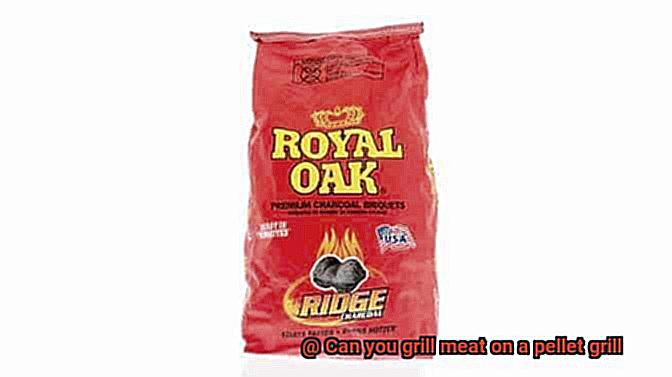
Step 5: Cooking Time and Monitoring
Place your seasoned meats on the side of the grill opposite the heat source (without the drip tray). Close the lid and let the magic unfold. The circulating hot air creates a convection effect, ensuring even cooking from all sides.
Remember to monitor the internal temperature of your meats using a meat thermometer. Each cut has its ideal internal temperature for doneness. For example, brisket achieves melt-in-your-mouth tenderness at 195-205°F.
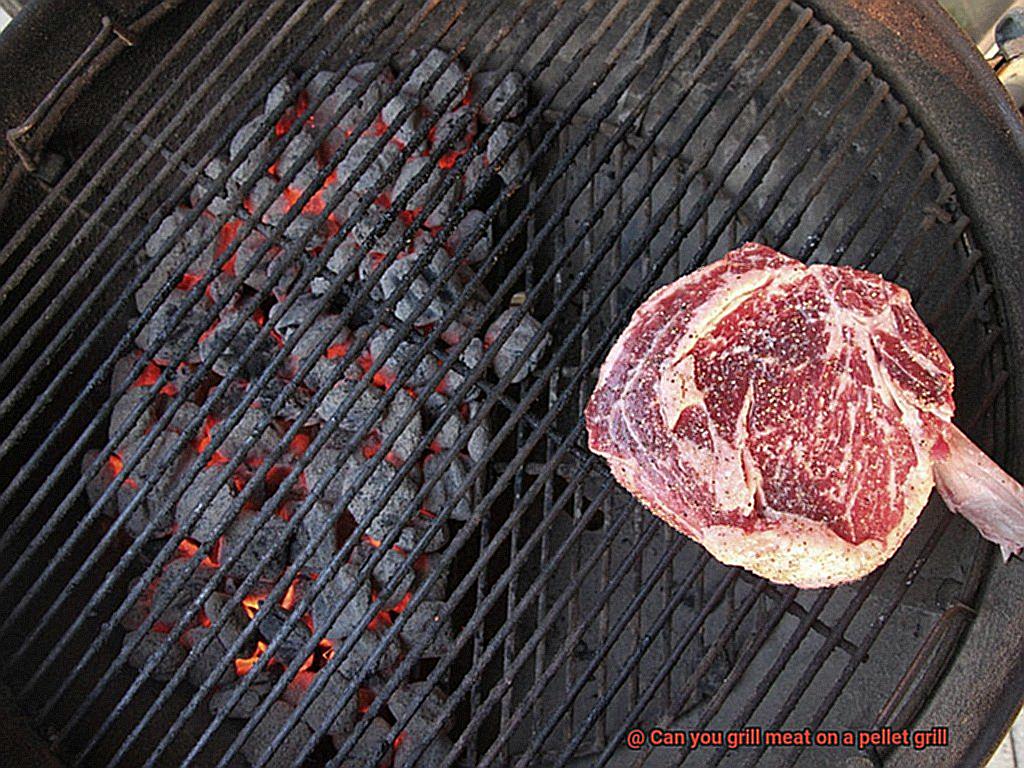
Step 6: Patience is Key
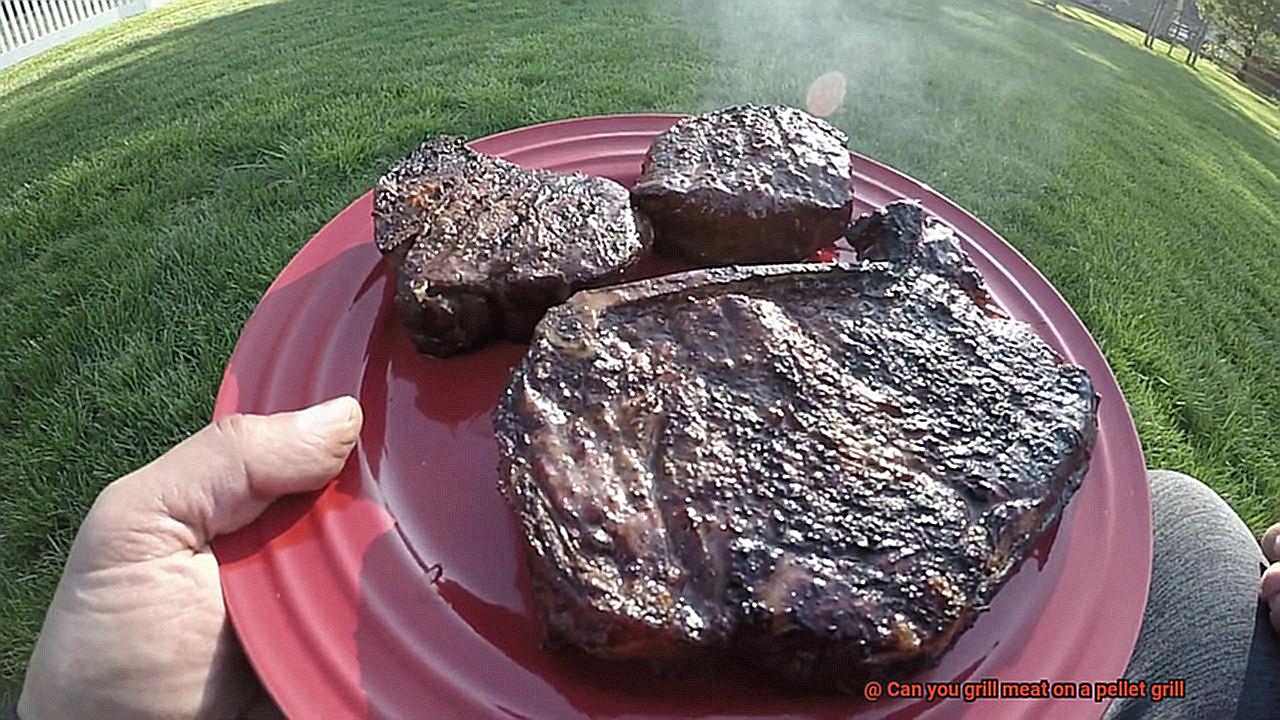
Embrace the virtue of patience, as slow-cooked meats take time. Depending on the size and type of meat, it can take anywhere from 4-12 hours. Resist the urge to constantly check on your meats, as temperature fluctuations can prolong cooking time.
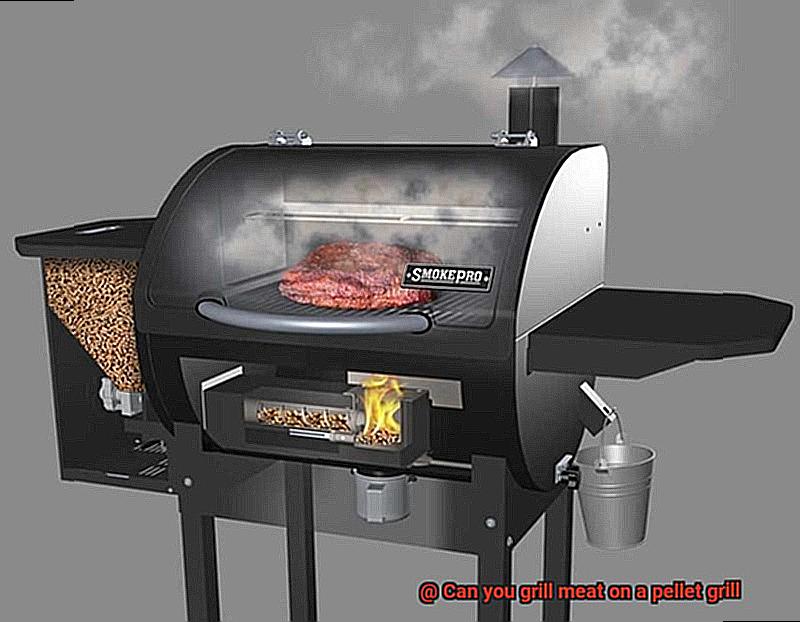
Step 7: Resting and Enjoying
Once your meats reach their desired doneness, allow them to rest before serving. This crucial step locks in the juices and enhances the flavors. Then, indulge in the fruits of your labor – succulent, mouthwatering slow-cooked meats.
Wide Surface Area for Multiple Cuts of Meat Simultaneously
Look no further than a pellet grill. With its wide surface area, a pellet grill allows you to cook multiple cuts of meat simultaneously, making it the ultimate multitasking tool for any grilling enthusiast. In this blog post, we’ll explore the advantages of using a pellet grill and how it can take your grilling game to the next level.
Advantage 1: Perfect for Large Gatherings
When it comes to hosting a backyard barbecue or a family gathering, time is of the essence. The last thing you want is to spend all your precious moments flipping burgers or rotating chicken breasts. Fear not. With a pellet grill’s wide cooking surface area, you can effortlessly accommodate multiple cuts of meat, from sizzling steaks to succulent whole chickens, without overcrowding the grill. This means more time spent enjoying the party and less time laboring over the grill.
Advantage 2: Even Cooking and Flavorful Results
Advantage 3: Better Heat Distribution
Say goodbye to unpredictable hot spots and uneven cooking. The wide surface area of a pellet grill ensures excellent heat distribution. The heat generated by the wood pellets is evenly spread across the entire cooking surface, guaranteeing that each piece of meat cooks at the same temperature. From edge to edge, your steak will boast a mouthwatering sear on the outside while maintaining a juicy center.
Advantage 4: Versatility for Different Cooking Techniques
A pellet grill’s wide surface area opens up a world of possibilities for experimenting with various cooking techniques. One side of the grill can be dedicated to direct heat grilling, where you quickly sear your meats over high heat, while the other side is reserved for indirect heat smoking, allowing you to slow-cook your meat at a lower temperature. This versatility enables you to cook different cuts of meat using different methods simultaneously, catering to everyone’s preferences and creating an unforgettable culinary experience.
Preheating the Grill Before Placing the Meat on the Cooking Grate
You’ve got your pellet grill fired up and ready to go. But before you start slapping that juicy piece of meat on the cooking grate, there’s one crucial step you shouldn’t skip – preheating the grill. Trust me, it’s the secret ingredient to achieving that perfect sear and evenly cooked meat every time.
Why is preheating so important? Let me break it down for you.
First and foremost, preheating ensures that your grill reaches the desired temperature. This is essential for creating that beautiful sear on your meat. When the grates are hot, they create a non-stick surface, making it easier to flip and remove the meat without it tearing apart. Plus, who doesn’t love those gorgeous grill marks?
But it’s not just about aesthetics. Preheating also allows the grill to heat up evenly, ensuring that your meat cooks through without any hot or cold spots. Say goodbye to undercooked or overcooked meat. With a properly preheated grill, every bite will be perfectly cooked to your liking.
And let’s not forget about cleanliness. Preheating helps eliminate any residual flavors or odors from previous cookings. It also burns off any leftover food particles or grease, resulting in a cleaner and more hygienic cooking surface. Your taste buds will thank you.
Now that we know why preheating is essential, let’s talk about how to do it right.
To preheat your pellet grill, start by turning it on and setting the temperature to high. This activates the auger, which feeds pellets into the fire pot. The fire pot ignites the pellets, creating a flame that heats up the grill. Ah, the magic of technology.
It is recommended to preheat the pellet grill for at least 10-15 minutes before placing the meat on the cooking grate. This gives enough time for the grill to reach its desired temperature and ensures that it is evenly heated. And remember, keep that grill lid closed during preheating to maintain a constant temperature inside. Fluctuations in temperature can mess up your cooking time and leave you with less than stellar results.
Once your pellet grill has reached its desired temperature, it’s time to get that meat on the cooking grate. Carefully place it down, avoiding any hot surfaces (ouch.). Close the lid and let the magic happen. Just make sure to refer to a meat temperature guide to ensure that your meat reaches the recommended internal temperature for safety and optimal flavor.
Enhancing Flavor with Different Types of Wood Pellets
When it comes to grilling meat on a pellet grill, the type of wood pellets used can have a significant impact on the flavor profile of the food. Different types of wood impart different flavors, allowing you to experiment and create unique taste combinations.
One popular wood pellet option is hickory. Hickory adds a strong and smoky flavor to meats, making it an excellent choice for grilling beef, pork, and poultry. Its robust taste pairs well with hearty cuts of meat, creating a mouthwatering aroma and rich flavor.
For those looking for a milder yet still flavorful option, fruitwood pellets such as apple or cherry can be used. These pellets provide a hint of sweetness to the meat without overpowering its natural flavors. They work well with lighter meats like fish, chicken, and even vegetables.
Mesquite is another wood pellet variety that adds a bold and tangy taste to grilled meats. It is particularly popular in Texas-style barbecue, where its intense flavor complements beef brisket and ribs. However, due to its strong nature, it is recommended to use mesquite sparingly or in combination with other milder woods.
In addition to these popular options, there are various other wood pellets available on the market. Some examples include oak, maple, pecan, alder, and even blends of different woods. Each type has its own unique flavor profile, allowing you to experiment and find your preferred combinations.
It’s important to note that the intensity of the wood smoke flavor can be adjusted by controlling the amount of pellets used and the length of time the meat is exposed to the smoke. For a lighter smoke flavor, you can use fewer pellets or limit the smoking time. Conversely, if you desire a more pronounced smoky taste, increase the amount of pellets or extend the smoking duration.
When grilling with wood pellets, it’s essential to choose high-quality pellets made from 100% natural wood. Avoid using pellets that contain fillers or binders, as they may produce unpleasant flavors and chemicals that can taint the taste of your food.
Minimal Supervision During the Cooking Process
One of the major advantages of using a pellet grill is the minimal supervision required during the cooking process. Let’s dive into the benefits that make this possible.
First off, let’s talk temperature control. With a pellet grill, you can bid farewell to those pesky temperature fluctuations. These grills boast a digital controller that regulates the flow of wood pellets, ensuring a consistent temperature throughout. Once you’ve set your desired temperature, you can sit back, relax, and let the grill do its thing. No more constant heat adjustments or worries about hot spots.
Speaking of even cooking, that’s another perk of using a pellet grill. The indirect heat and consistent temperature distribution mean no more wasting time flipping and turning your meat every few minutes. Just place it on the grill, close the lid, and let the magic happen. You can step away from the grill and focus on other tasks without fear of overcooking or burning your precious meat.
But wait, there’s more. Pellet grills use wood pellets as fuel, which not only adds a delicious smoky flavor but also ensures a controlled burn. Say goodbye to flare-ups and charred disasters. These pellets provide a steady and controlled heat source, so you can trust that your meat will be cooked to perfection without constant monitoring or adjustments.
And if all that wasn’t enough, some pellet grills even come with Wi-Fi connectivity and mobile apps. That’s right – you can control and monitor your grill from anywhere. Set the desired temperature, check on your cooking progress, and receive notifications when your meat reaches the perfect doneness. It’s like having a personal grilling assistant right in your pocket.
hY89bowHix4″ >
Conclusion
In conclusion, the answer to the question “Can you grill meat on a pellet grill?”
is a resounding yes. Pellet grills are not just for smoking, they can also be used for grilling meats to perfection.
The smoky flavor that pellet grills impart adds an extra layer of deliciousness to your grilled meats.

